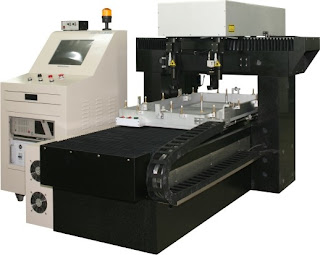.
I intended to write about this topic (What's a tank good for, and does its end near?) for a while. A reply written by me on a forum turned out to be so long and exhaustive that it's really what I had planned for the blog. Lazy as I am, I'll copy it.
[...] however my confusion remains. What is/ where is the utility and value of the MBT?
The Main Battle Tank is a vehicle that was developed for intentional use in line-of-sight combat. its crew is capable of justifying the investment into the tank team and the hardware by exploiting the degree of protection offered by the tank for the critical mass of survivability on the battlefield.
This critical mass does not include invulnerability, but rather vastly reduced or entirely negated effectiveness of most threat weapons. The tank is still vulnerable to few threat weapons - crew training and tank tactics are required to counter these threats for additional survivability on the mission.
The high survivability in comparison to "light" forces (especially on open ground) in combination with the internal combustion engine's power offer a high mobility (with a heavyweight weaponry and ammunition) on the battlefield.
This high practical mobility in face of many threats can be exploited by large unit and formation tactics to great effect.
Tanks can also be used with assault gun tactics; in this case they serve on the offence as fire support platforms with weapons and ammunitions heavier than practical for dismounted troops.
The best targets for a tank are those which justify the expenditure of scarce ammunition and the risk involved. Hostile main battle tanks are sometimes in this category, sometimes not. It depends on the other forces' ability to deal with them (does your army have enough effective threats against hostile tanks?).
(This ability was in doubt since 1940. Anti-tank guns were largely immobile, dedicated tank destroyers/Jagdpanzer were a kind of tank themselves, infantry and engineer anti-tank munitions were very rarely able to withstand concentrated breakthrough attempts.
The problem continued during the Cold War when shaped charge-based weapons were able to penetrate tanks mostly with unpredictable effect. Their employment either required vicinity (and weighed down the dismounted troops) or depended on missile guidances and long flight times - both offering countermeasure opportunities to the enemy.
In short; there was little trust in the non-tank-based anti-tank capabilities.)
[End of forum reply]
Positions such as "it's necessary for Blitzkrieg" or "it's the best anti-tank weapon" fall short of really explaining the military-technical phenomenon of the tank. Armoured combat vehicles (
not necessarily only main battle tanks)
fill a niche for which there's no satisfactory substitute. That's why they don't go away.
Some tank designs can prove to be unsatisfactory - especially if they don't reach the critical mass of protection. This explains the demise of the light tank since WW2. Other tanks prove unsatisfactory because they aren't efficient enough or don't fit into the operational doctrine any more (such as short-legged heavy tanks as the
T-10).
Finally, there's the main battle tank which actually evolved into a very mobile heavy tank during the 70's when the Leopard 2 was developed.
Quote "Jane's Weapon Systems 1976":
Previously, when a tank had better armour the performance and mobility declined; in designing the Leopard 2 the Germans have reversed this trend, the end result being a superior vehicle.
 |
| Leopard 2A4, externally similar to the early Leopard 2 as introduced in '79. |
So the tank is here to stay (although in much-reduced quantity as it seems). Countermeasures against it provoke counter-countermeasures. This seems to be unavoidable because modern armies need to fill the armoured combat vehicle's niche and there's simply no satisfactory substitute.
Tanks are dying and becoming obsolete all the time - but there will always appear some (new models or upgrades) that are not obsolete (yet).
Sven Ortmann
.







